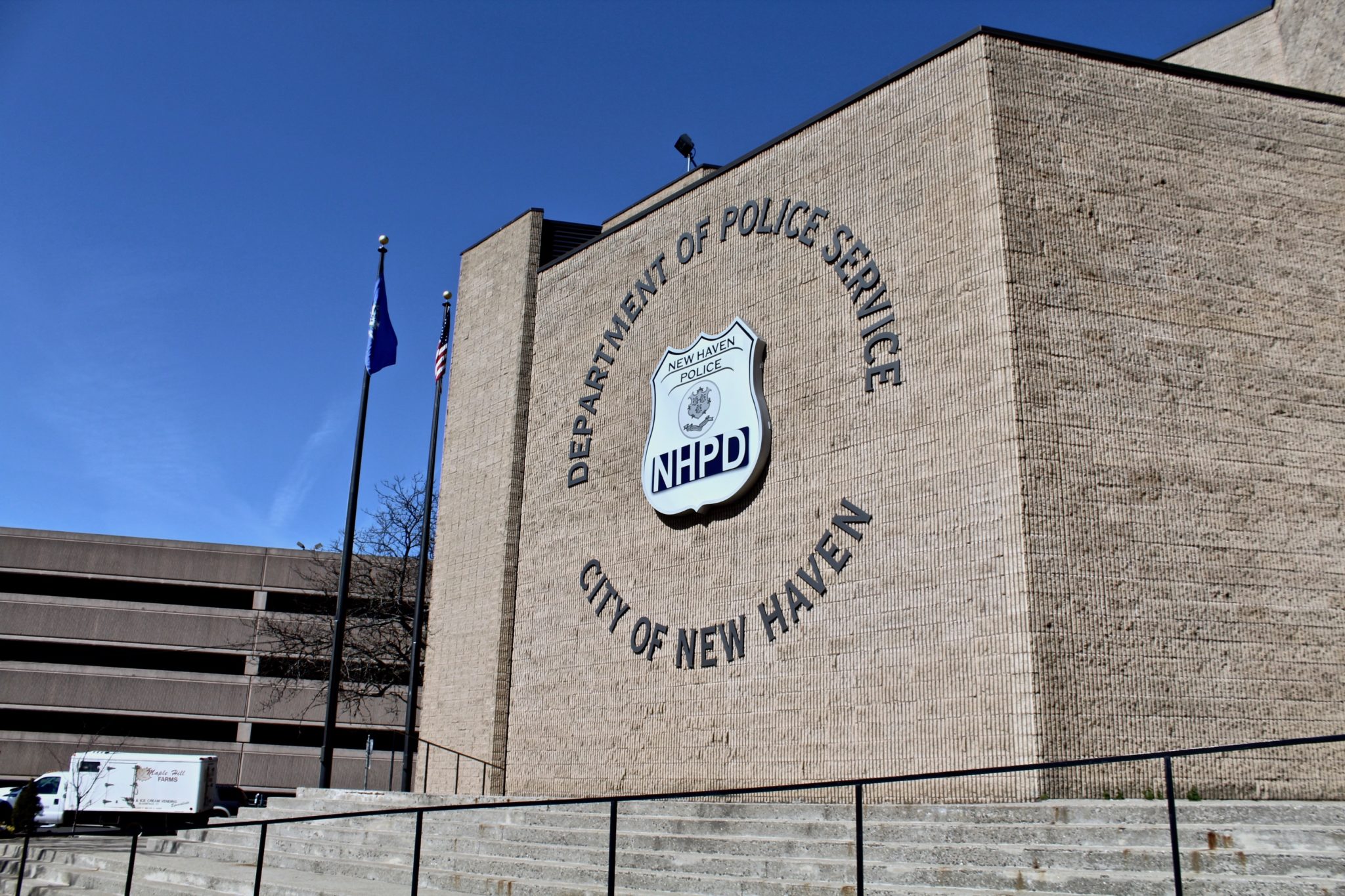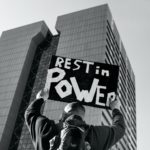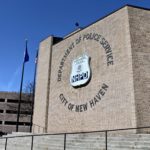ANALYSIS: New Haven is experiencing a rise in homicides, violent crime; Officials, residents split on solutions

Adrian Kulezsa, Staff Photographer
On March 22, Alessia Mesquita and her boyfriend, Rashod Newton, were driving down Clifton Street in the Fair Haven neighborhood with their 1-year-old child in the backseat when an argument between the two erupted. The argument escalated in the car, and Newton shot Mesquita several times. Newton then rushed away with their daughter in the backseat. Mesquita’s body was dumped at the intersection of Clifton Street and Lenox Street.
“Any mother who fears for the safety of their children would do anything, anything,” Sandy Mesquita, the victim’s mother, told FOX61 on the day following the killing. “I would’ve took a bullet for my daughter, if I could, to save my daughter.”
Sandy said she intended to take her daughter to Hawaii, knowing that her daughter’s home environment had become hostile in the leadup to her death. Unfortunately for the family, the Internal Revenue Service stalled Alessia’s income tax return, and the trip was delayed.
Mesquita was the city’s ninth homicide victim this year. By this point in 2020, the city had only two.
In a February Board of Alders public safety meeting, New Haven Police Department Chief Renee Dominguez said that there has been an uptick in homicides and assaults with firearms in comparison to recent years.
“Anytime a life is taken … [It’s] very emotional for the officers, many of them are parents,” Dominguez said in a press conference in late March. “It’s difficult to try to go through and keep your head focused, but that’s obviously what the officers did.”

In total, 2020 saw a total of 20 homicides and 121 assaults with weapons. Both numbers represented a more than 50 percent increase compared to 2019. The 20 homicides last year represented the largest such figure since 2011. Up until 2020, New Haven had experienced a steady decline in crime for the past decade. Former New Haven Police Chief Anthony Campbell ’95 DIV ’09 said at a meeting with officers and community members at the New Haven Police Department, or NHPD, headquarters in January 2019 that from 2003 to 2018, nonfatal shooting crimes and homicides experienced an overall decline. The bar graphs and tables plastered behind him at the meeting concurred.
Just why violent crime has increased at such a rate over the past year has attracted the attention of criminal justice professors, law enforcement and community activists. The News spoke with several of these New Haveners to explore the possible reasons for the crime influx and how the city should address it. Criminal justice professors and law enforcement officials have largely attributed the increase to how public health restrictions have thrown a wrench into gun violence prevention programs. Other academics and community activists also add, however, that the rise is symptomatic of the programs’ inability to target the root causes of gun violence.
‘Focused deterrence’
One way law enforcement officials and criminal justice professors have argued the city can lower homicides and violent crimes is through “focused deterrence” programs, which target the city residents most at risk to be either the perpetrator or victim of gun-based or violent crime, using police-driven programs.
But some NHPD officials, as well as criminal justice professors at the University of New Haven Michael Lawlor and John DeCarlo, have said that the public health restrictions placed on “focused deterrence” programs have limited their effectiveness in curbing the rise in homicides.
Last year, NHPD Assistant Chief Karl Jacobson told the News that the fall of homicides from 34 in 2011 to 10 in 2017 was due in great part to deterrence programs like Project Longevity, which launched in 2012. Project Longevity engages “law enforcement, social service providers and community members” to build trust with communities where violent crime is prevalent. A component is the “call-in,” where law enforcement meets group members face-to-face to share information on resources in education, employment, housing, medical and mental health. Project Longevity reaches out to members of these groups hoping those members convey the aforementioned messages. The program’s start does correlate with the Elm City’s decline in homicide numbers over the eight years.
Another focused deterrence program is Project MORE, which provides a “structured and systematic process to reintegrate ex-offenders into the community.” In New Haven, the organization built a transition house to give service to incarcerated individuals after reentry and execute programs such as Cognitive Behavioral Therapy and General Educational Development, or GED Prep Classes.
Programs like Project Longevity are structured to provide face-to-face interaction between various members of communities affected by gun violence. Lawlor said clergy members and grandmothers sometimes participate alongside the individuals susceptible to committing or being a victim of gun violence.
But since the onset of the pandemic, health restrictions have put an end to such NHPD programs, said Dominguez and Jacobson in the February public safety meeting.
Aside from the temporary halt of Project Longevity and Project MORE, Dominguez told the committee that the pandemic has reduced face-to-face interactions between officers and residents on parole and probation. The NHPD focuses its outreach projects on these residents as part of their efforts to reduce gun violence because, Dominguez said, they are more likely to commit gun-related offenses or become victims of such offenses, based on Boston’s Operation Ceasefire model.

NHPD officials have also put emphasis on gun buybacks as a means of preventing gun violence. In an April event, city officials emphasized the importance of the program in preventing accidental shootings.
“When you think about the utility of a gun buyback, there’s a lot of focus on accidental discharges of guns, in-the-home suicides,” New Haven Mayor Justin Elicker told the News in April. “This is a way for us to give the community an option to get the gun out of the home.”
Elicker has framed the city’s gun buyback program as a crucial piece in government efforts to decrease gun violence in New Haven. He cited Project Safe Neighborhoods and Project Longevity as examples — both are programs where officers call individuals who have a history in the prison system to check in on them. The city also established a reentry walk-in center, where formerly incarcerated individuals will be dropped off after release and can receive housing and job support. Elicker also said that the city is finalizing a shooting task force, which focuses on investigating gun violence cases, and has partnered with the state’s parole and probation board.
Leaders of community-driven organizations pushed back on the effectiveness of aforementioned police-driven programs. Leonard Jahad, who served in the Connecticut Department of Corrections for almost 30 years beginning in 1990, is one such individual.
In 2019, Jahad left his post and turned to community-driven approaches. He now serves as the executive director of the Connecticut Violence Intervention Program.
Jahad first pointed out that the rise of homicides in the city were coupled with an increase in gun sales during the pandemic. As of October, Connecticut state police processed more than 147,000 firearm transactions, compared to the more than 127,000 in all of 2019 and 129,000 in all of 2018.
Still, Jahad said that gun buybacks do not directly address the gun accessibility problem because most guns surrendered are not those from urban areas, where there is an uptick of homicides over the past year. Most of the guns surrendered are actually from those in suburban areas; this claim is supported by the abundance of hunting guns the NHPD received in their buyback this year.
A disconnect with the community
In the aftermath of George Floyd’s murder by police last summer, the national reckoning on policing and race had contributed to a decrease in “police legitimacy,” which contributes to what some call a failure of police-driven gun violence prevention programs.
Nationally, DeCarlo said, the racial gap in confidence and cooperation with police has widened. In 2001, 59 percent of white adults trusted the police and only 38 percent of Black adults trusted the police. In 2020, the gap is even wider with white adults having a 56 percent confidence rate and Black adults with a 19 percent confidence rate.
During the February public safety meeting, Reverend Boise Kimber, the pastor of First Calvary Baptist churches in New Haven, also brought up this gap, stating that many officers do not “know” the areas they are serving.
“Do we just want to put everybody in jail, or do we want to have relationships?” Kimber said. “One of the biggest issues that we’re facing is that the new officers do not know the community. You cannot have 15 white officers in Dixwell-Newhallville who have never lived in Dixwell-Newhallville, who drive in and drive out. How do we bridge that gap?”
Of the 16 new officers the NHPD welcomed in January, only four are actually from New Haven — others come from West Haven, North Haven and other surrounding Connecticut towns.
Head of Project Longevity Stacey Spell and Ward 30 Alder Honda Smith of West Hills stressed the importance of community engagement. Smith said that the constant presence of police officers in West Hills as a part of prevention patrolling, a gun violence prevention program, may be tethering ties between the community and the police. She said that the community wants to help but is getting “pushed back” by the police because advocates are saying that the police are doing most of the intervention work instead of engaging more of the community.
Spell also recognized the importance of engaging the community youth to prevent gun violence.
To prevent gun violence, the leaders suggested, the community should be more engaged.
Addressing the root cause of homicides
Long-time community activist and Stop Solitary CT organizer Barbara Fair disagreed with the arguments put forward by law enforcement officials and professors. Police-led programs, she told the News in an interview, do not address the root cause of homicides. She told the News with the News that investing in more law enforcement is not the answer.
“How do we get to the root causes of these crimes of violence and so much pain in our community, so much trauma?” Fair said. “We don’t invest in [programs that address root cause]. We invest in cops and cages. And then we wonder why nothing changes.”
Activists from community-based organizations state that they take a more long-term approach to gun violence in the city.
Jahad’s CT Violence Intervention Program is one such organization. One of its approaches is “Cure Violence,” which assesses and treats community violence “like a virus.” The organization also employs a ceasefire model that uses “critical messengers” — or individuals who have at some point been perpetrators or victims of gun-based and violent crime — to dissuade community members with similar backgrounds from committing the same crimes. Jahad said he has seen the effectiveness of mediation while working as a probation officer with individuals who, after living in systems of incarceration for long periods of time, can become trapped in repeat cycles of homicide instigated by unresolved “beef,” or disagreement.
Jahad also said that hearing testimonies from perpetrators is more effective than focused deterrence because New Haven does not have gangs that create organized crime. He said that he learned from his time in law enforcement that those who commit violent crimes do so for individual-based as opposed to group-related disagreements.
Fair also referenced an organization called “Guns Down Books Up,” which aims to keep youth engaged in music, education, arts and athletics to dissuade them from turning to organized crime. Fair said that such programs are crucial for long-reaching anti-violence efforts. However, she said these programs are often relatively small, which can place them at a disadvantage to more established organizations when applying for funds. Public efforts, she said, should concentrate on identifying and funding these organizations.

Looking forward
Lawlor and DeCarlo emphasized that the rise of homicides are not unique to New Haven and that this trend exists across the country. DeCarlo further stated that Connecticut has a rate of three homicides per 100,000 people, compared to the national number of five.
Dominguez, during the February public safety meeting, expressed optimism that the number of homicides and violent crime will decrease for the rest of the year given the NHPD has adapted its gun intervention practices to fit public health guidelines.
Jahad, however, expressed wariness for the upcoming summer because in previous years, homicides increased in the summer because Jahad explained that people are out more, according to Jahad and DeCarlo. Jahad added that since COVID-19 restrictions are being lifted, there is a renewed enthusiasm to go outside, which he fears will lead to increased crime.
DeCarlo said that it is difficult to predict what will occur because the country is experiencing a unique period in criminology, where there are so many factors influencing crime: economic downturn due to the pandemic, police reform efforts, reallocation of police funding and social unrest.
There were 24 victims of homicides in Connecticut last year.










